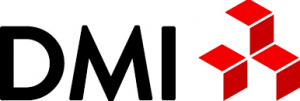This blog post is an excerpt from GovLoop’s recent guide, “Tips to Address 6 Common Pain Points in Service Delivery.”
As the private sector continues to modernize, the public sector must work to keep up with citizen expectations surrounding IT service delivery. Despite recent innovations, government agencies often find it challenging to match private sector technology trends and effectively engage their end users. In order to address this issue and foster stronger interactions with their constituencies, agencies should consider a digital multichannel approach to their processes.
To better understand how agencies can adopt multichannel methods, or the ability to access the same information across multiple devices and platforms, GovLoop spoke with Varun Dogra, Chief Technology Officer at DMI, an end-to-end mobility company that provides IT, infrastructure, cybersecurity, big data, mobility and cloud services to all fifteen U.S. federal departments. Agencies face many of the same customer service hurdles as the private sector.
“Agencies are driven by their mission and there is constant pressure to deliver better services at a lower cost,” Dogra explained. It is critical that agencies are aware of what their end users want and that they are getting the right experiences. And for most government organizations, they have to be aware that their technology and approach isn’t just serving citizens – it’s serving their internal employees, too.
These two prongs of customer service each come with their own unique challenges. “If you don’t give government employees the right tools they can’t be effective in supporting citizens,” said Dogra. “With citizens, agencies have to be able to provide technology solutions that users adopt and easily use.” The key is to give each user the right information at the right time and in the most appropriate channel, ultimately empowering the end user.
Another way to increase both employee engagement and enhance the citizen experience is to actually put yourself in your employees’ and citizens’ shoes during design and development phases. This process is known as design thinking. Design thinking works to match agencies’ needs with available technology to design new services and products in a meaningful way. The approach is holistic and agile, with an emphasis on user as well as mission needs.
By tackling complex problems with design thinking, agency leaders are able to implement products and approaches that allow for more efficient internal operations. This allows agency employees to offer better services to their constituency, promoting enhanced engagement. For example, the Department of Labor’s Mine Safety and Health Administration (MSHA) ensures mine safety by performing regular inspections in the field. Traditionally, MSHA employees would record information from the mines on paper, and later transfer it to a computer.
By leveraging an agile design thinking approach, MSHA worked with DMI to build a mobile inspection solution to streamline and automate the inspection process. The methodology involved multiple iterations based on observations and findings from inspector actions. As a result, a secure mobile inspection platform was designed based on the insights drawn from each step.
Inspectors will now be able to seamlessly enter information or record citations directly into their mobile application anywhere they can carry their devices, whether online or offline, and sync the data once connectivity is reestablished. “The key is to first understand user behavior and then apply innovation to create a frictionless experience for citizens and employees across channels.” Dogra explained.
This tool will dramatically reduce manual labor, improve the quality and accuracy of information and speed up the on-site inspection process. “Giving the agency’s employees mobile solutions makes their jobs easier and allows them to spend more time doing other mission-critical work” said Dogra.
DMI works with government clients to actually implement and overcome these obstacles. “We provide digital strategies and leverage our existing off-the-shelf mobile platforms to help agencies support their mission objectives through technology and innovation,” Dogra explained. DMI’s solutions are individualized to each agency and aim to mold design thinking methodologies to each organization’s needs.
Another key initiative that DMI recommends is the outsourcing of mobile device life-cycle management. By shifting this complex task to experts in the field, it allows agencies to focus on their missions and better serve citizens and employees. For example, the U.S. Office of the Comptroller of the Currency (OCC) utilizes this service to assess, deliver, operate and support turnkey end-to-end Managed Mobility Services (MMS).
In the future of the public sector, keeping up with emerging technologies, such as artificial intelligence through deep learning, big data analytics and crowd sourcing, will be critical to continually fostering optimal engagement. “We have to constantly evolve our perception of what the end user wants and be able to employ technologies that meet those needs,” said Dogra.
With the right methodologies, processes and technologies, the public sector will be able to efficiently and effectively engage their constituents.





Leave a Reply
You must be logged in to post a comment.